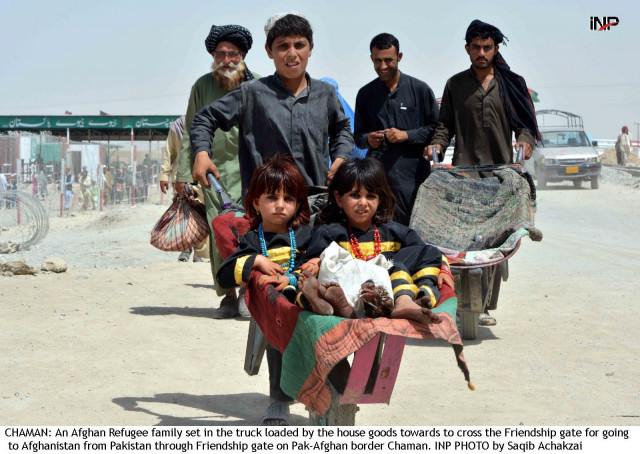Vulnerable status: Afghan refugees suffer harassment, abuses
Pakistani authorities face criticism for failing to protect refugees

PHOTO: INP
The Afghan repatriation process started in the wake of the terrorist attack on the Army Pubic School in Peshawar which left 132 students dead and led to the National Action Plan’s framing to root out insurgents from the country, particularly tribal regions.
Pakistan an exemplary host to Afghan refugees, says UNHCR rep
The World Human Rights Watch Report 2017, which analyses trends of human rights violations across the globe, stated that repatriating from Pakistan increased last year because of “coercive pressure from local governments” and by the end of August, as many as 70,000 registered refugees had been repatriated.
Citing incidents of harassment against Afghan refugees, the report stated that police personnel “threatened and extortion was demanded, particularly in K-P because of their uncertain residency status”.
“Statements by senior Pakistani officials in 2016 raised concerns of new government actions to restrict the rights of Afghan refugees,” the reported asserted.
Furthermore, “police pressure and abuses compelled thousands of Afghans living in Pakistan to return to Afghanistan or flee elsewhere in 2016.”
Shedding light on other trends in the country, the report stated that media outlets in 2016 remained “under pressure to not report on or criticising human rights violations in counter-terrorism operations”.
“The Taliban and other armed groups threatened media outlets and targeted journalists and activists for their work,” the report insisted.
200,000 Afghan refugees return in exodus from Pakistan: UNHCR
The report, however, maintained that the number of militancy-related violence decreased last year against figures for the previous year.
But, the report also stated, women, religious minorities, and transgender persons faced “violent attacks, insecurity, and persecution, (while) the government failed to provide adequate protection or hold perpetrators accountable.”
Published in The Express Tribune, January 14th, 2017.













COMMENTS
Comments are moderated and generally will be posted if they are on-topic and not abusive.
For more information, please see our Comments FAQ